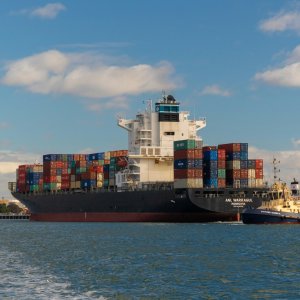Trends That Will Shape the Logistics Industry in 2024

As we navigate the dynamic landscape of 2024, the logistics industry stands at the nexus of transformative trends reshaping global commerce. From the seamless fusion of physical and digital experiences (phygitalization) to the strategic deployment of technological tools, our journey is defined by innovation and collaboration.
In this era of heightened user expectations, the convergence of online and offline realms demands a reimagining of user experiences. Leveraging cutting-edge technologies, we're accelerating strategies poised to revolutionize logistics, fostering agility and efficiency across the supply chain.
Strategic alliances emerge as linchpins of success, facilitating seamless integration and amplifying our global reach. By embracing these trends, we empower businesses to transcend borders and cultivate enduring connections in a rapidly evolving marketplace.
In the quest to cater to today's consumers and what they expect when shopping in e-commerce, companies must adopt constant optimizations and innovative strategies that allow them to be more competitive. Businesses need a reliable global logistics network and tools that help them stay connected with their customers around the world, with the aim of supporting their future prospects.
By prioritizing seamless interactions and intuitive interfaces, we redefine the boundaries of customer engagement, forging deeper connections and fostering loyalty. As we embark on this transformative journey, our commitment remains unwavering: to deliver not just packages, but unparalleled experiences that resonate in the hearts and minds of our customers, today and in the dynamic landscape of tomorrow.
One of these trends is the User Experience (UX), as it is known in the universe of those who design the apps and websites where we buy. This strategy is defined by aspects such as usability, accessibility and convenience of the platform or services of an online business. For example, if the navigation on an e-commerce platform is optimal, this can contribute to more people making a purchase and that increases the chances of them interacting with the brand again.
In the pursuit of enhancing user experience, personalized shopping emerges as a cornerstone strategy. By meticulously analyzing consumer data gleaned from every interaction, businesses can tailor offers and messages to individual profiles, thereby establishing a unique and compelling value proposition. Moreover, the advent of phygitalization — a seamless integration of physical and digital sales channels — heralds a new era of consumer engagement. Phygitalization offers diverse options, such as online purchases with in-store pickups, and seamless transitions between physical and online shopping experiences. This symbiotic blend of digital convenience and physical presence eliminates friction points, empowering consumers to navigate effortlessly between online and offline realms; and logistics companies are now obligated to digitize their strategies to offer the best possible user experience if they want to retain their clients.
The technological tools available today open a door of infinite possibilities for delivering a memorable experience to consumers in the digital ecosystem. In this sense, collaboration between companies and various players present at every stage of e-commerce may be the real key to scalability and profitability for many companies in 2024.
Strategic alliances between the various players in the supply chain have the potential to add the necessary experience and resources to not only meet the demands of those who buy online, but to exceed them. Companies such as UPS have developed solutions that adapt to the different demands of companies regardless of their size, even during peak seasons, when having an ally in the logistics field improves the chances of outperforming the competition.
The key point is to ensure that buyers get their orders in their hands on time, but this can put significant pressure on small and medium-sized companies. That's why we have made a commitment to strengthen our offer for this segment through alliances with companies like Estafeta, boosting exports of Mexican SMEs in recent years. Also, we provide them with the training they need in customs, cross-border logistics, even sustainability, to simplify their export processes, as with the Ayuda Pymes program.
Likewise, the Mexican firm Mienvío also recently became our partner in the country, in order to provide SMEs and MSMEs with tools that will simplify customs procedures and various transit time options for both air and ground services to destinations in the United States and the world's main markets.
In addition to strategies focused on seizing technological advances, there are also initiatives focused on reducing the industry's impact on the environment. Today, it is critical that all players in the logistics ecosystem develop and implement ambitious plans capable of limiting the environmental impact of their activities and consolidating a truly sustainable industry.
It is also key that these plans and activities are reported to provide visibility to partners, customers, consumers and anyone who wants to understand concretely how an urgent global issue is being addressed. For UPS, transparency reporting is a valuable tool to keep track of progress and to stay focused on long-term goals, such as decarbonizing our entire global supply chain by 2050.
In short, this year will be critical to accelerate strategies that have the potential to transform what we do into an industry with a much more positive impact for people and the planet. New technologies are driving online logistics and enabling smarter trade, with more efficiency throughout the supply chain, greater visibility and transparency; allowing, in turn, the movement of goods to be optimized and redirected to where they are most needed. Once a business sells online, logistics becomes an indispensable part of it. If a few years ago merchants only thought of that part of the operation as a wheel that made their business work, now they can use logistics as a competitive advantage.




 By Francisco Ricaurte | President -
Mon, 03/11/2024 - 10:00
By Francisco Ricaurte | President -
Mon, 03/11/2024 - 10:00















